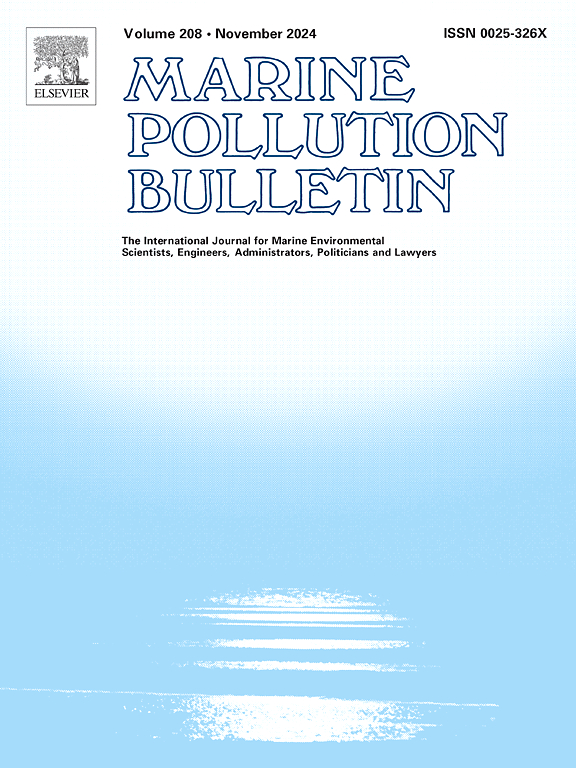由浊度流驱动的合成微纤维:从平滑床到宏观粗糙床的过渡
IF 4.9
3区 环境科学与生态学
Q1 ENVIRONMENTAL SCIENCES
引用次数: 0
摘要
最近的研究证实了浊度流在水生环境中长距离运输微塑料(MPs)方面发挥的重要作用。然而,只有有限数量的研究专门研究了微纤维(MFs)的传输动力学。与天然沉积物相比,这些合成纤维具有独特的物理特性,如高纵横比、柔韧性和低密度,这些特性影响了它们的行为、沉降模式和环境命运,因此面临着独特的挑战。利用锁交换水槽实验,这项工作研究了不同形状和大小的MFs是如何被流经不同河床的浊度流输送的。在水槽中进行了各种床层条件(从微观到宏观粗糙度)和水深的实验,以评估这些因素如何影响MF的运输和沉积。结果表明,河床粗糙度和水深对浊度流的惯性速度均有显著影响,从而影响悬浮颗粒沿水槽传播时的累积。尽管它们有沉降的趋势,但可能由于它们与流线对齐,特别是在直径较小的情况下,它们在流动中被输送了更长的距离。该研究首次建立了一个无因次模型,以预测地层粒度、中频沉降速度、水柱高度和中频形状(以Corey形状因子为特征)的函数来预测中频输运。这些发现为研究自然环境中MFs的复杂行为提供了有价值的见解,并为进一步研究水生系统中塑料污染的命运奠定了基础。本文章由计算机程序翻译,如有差异,请以英文原文为准。

Synthetic microfibers driven by turbidity currents: Transition from smooth bed to macro-roughness
Recent research confirmed the significant role turbidity currents play in transporting microplastics (MPs) over long distances in aquatic environments. However, only a limited number of studies have specifically addressed the transport dynamics of microfibers (MFs). These synthetic fibers present unique challenges due to their distinctive physical characteristics, such as high aspect ratios, flexibility, and low densities compared to natural sediments, which influence their behavior, settling patterns, and environmental fate. Using lock-exchange flume experiments, this work examines how MFs of differing shapes and sizes are transported by turbidity currents traveling over different bedforms. Experiments were conducted in a flume under a wide range of bed layer conditions (from micro to macro-roughness) and water depths, to assess how these factors influence MF transport and deposition. Results indicate that both bed roughness and water depth significantly affect the inertial velocity of turbidity currents, thereby affecting the accumulation of suspended MFs as they propagate along the flume. Despite their tendency to settle, MFs were transported over greater distances within the flow, likely due to their alignment with the streamlines, particularly in the case of smaller diameters. For the first time, a non-dimensional model was developed to predict MF transport as a function of bed granulometry, MF settling velocity, water column height, and MF shape (characterized by the Corey Shape Factor). The findings provide valuable insights into the complex behavior of MFs in natural environments and lay the groundwork for further research on the fate of plastic pollution in aquatic systems.
求助全文
通过发布文献求助,成功后即可免费获取论文全文。
去求助
来源期刊

Marine pollution bulletin
环境科学-海洋与淡水生物学
CiteScore
10.20
自引率
15.50%
发文量
1077
审稿时长
68 days
期刊介绍:
Marine Pollution Bulletin is concerned with the rational use of maritime and marine resources in estuaries, the seas and oceans, as well as with documenting marine pollution and introducing new forms of measurement and analysis. A wide range of topics are discussed as news, comment, reviews and research reports, not only on effluent disposal and pollution control, but also on the management, economic aspects and protection of the marine environment in general.
 求助内容:
求助内容: 应助结果提醒方式:
应助结果提醒方式:


